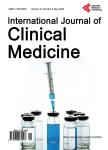Urological Affections after Laparoscopic Hernia Repair in Long-Term Follow up
Urological Affections after Laparoscopic Hernia Repair in Long-Term Follow up作者机构:不详
出 版 物:《International Journal of Clinical Medicine》 (临床医学国际期刊(英文))
年 卷 期:2011年第2卷第5期
页 面:604-612页
学科分类:1002[医学-临床医学] 100214[医学-肿瘤学] 10[医学]
主 题:Inguinal Hernia Urological Affections Mesh Laparoscopic Hernia Repair Pain
摘 要:Objectives: Chronic pain is a severe complication of mesh-based inguinal hernia repair. Pain upon ejaculation, testicular touch sensitivity and dysuria are apparent. Regarding the large amount of patients undergoing laparoscopic hernia repair, the problem seems quite evident. In this prospective, clinical, randomized, double-blind study we intended to investigate the biocompatibility of three different meshes and their influence on urological affections after operative procedure. Methods: 180 male patients with primary inguinal hernia undergoing TAPP were randomized for using a heavyweight (108 g/m2), double-filament PP mesh (Prolene, 10 9 15 cm, group A, n = 60), a multifilament, heavyweight variant (116 g/m2) of PP mesh (Serapren, 10 9 15 cm, group B, n = 60), or a composite mesh (polyglactin and PP) (Vypro II, 10 9 15 cm, group C, n = 60). We compared in terms of complications (seromas, recurrence rate), urological affections and life quality (SF-36 Health Survey). The follow-up period was 60 months. Results: Convalescence in group A was slower than in groups B and C: mean-term values of the visual scales for pain development were significantly (p th week postoperatively. There were no significant differences between groups B and C. Beyond the 12th post-interventional week the differences diminished. Conclusions: Independent which kind of mesh was implanted still 5% of patients suffered from urological affections 60 month later.



